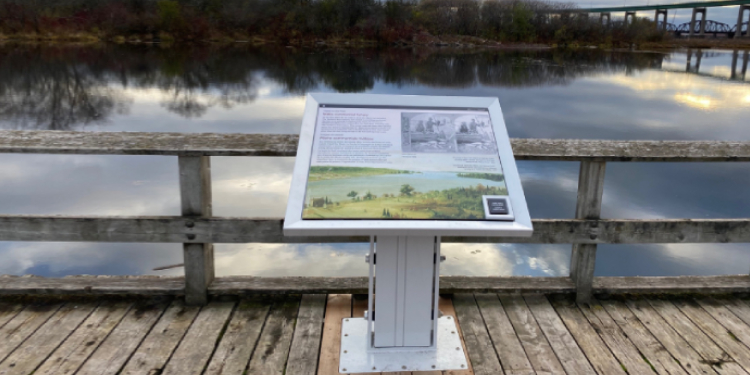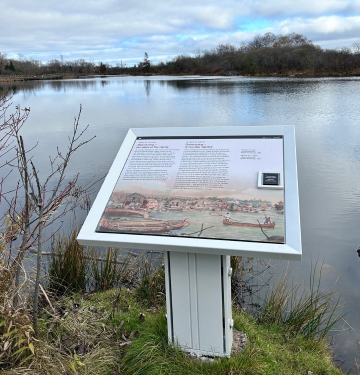
Added Indigenous perspectives at Sault Ste. Marie Canal
Sault Ste. Marie Canal National Historic Site: a birch bark canoe on loan at the new visitor centre offers an important connection to Batchewana First Nation ancestors.
Re-examining old interpretations
Sault Ste. Marie Canal National Historic Site commemorates the canal’s economic and strategic importance as the last link in an all-Canadian navigation system stretching from the Atlantic Ocean to Lake Superior. The site also showcases the canal’s history as the world’s longest lock when it was built in 1895, and as the first lock to operate using electricity.
Working together towards a broader understanding
Beginning in 2017, Parks Canada staff brainstormed a renewed interpretation of the site.
A new exhibit now gives voice to First Nations and Métis Nation history in the region. It is the result of collaboration with Batchewana First Nation, the Métis Nation of Ontario and Parks Canada.
New exhibit panels acknowledge the Sault Ste. Marie Canal site as being on the traditional territory of Anishinabek and Métis people and highlight the long history of First Nations and Métis peoples there. The exhibit also focuses on the fact that much was taken away from First Nations and Métis peoples’ ways of life when the canal was built. One panel describes the 1850 Robinson Huron Treaty, which set aside adjacent Whitefish Island for Batchewana First Nation’s sole benefit and use, but which was ignored when the island was expropriated for railroad construction in 1905. It was not returned to Batchewana First Nation until 1992.
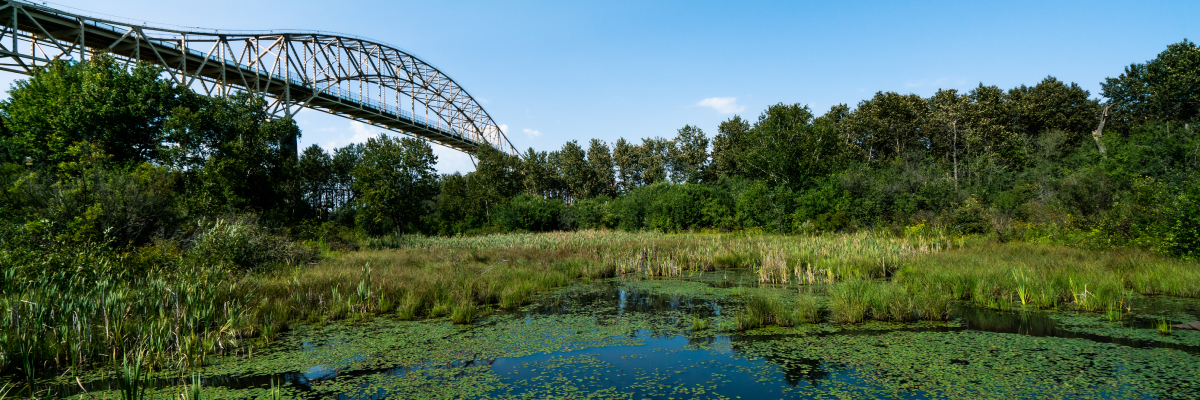
Another exhibit panel discusses the “Chicora incident” in 1870. That year, the Red River Expedition was sent from Ontario on the S.S. Chicora to establish Canadian authority in the new province of Manitoba and suppress the Métis Resistance led by Louis Riel. American refusal to allow the Chicora through the lock at Sault Ste. Marie, Michigan, convinced the Canadian government to build its own canal. While previous interpretation of the incident portrayed Riel and the Métis people as rebels, the new panel adds a Métis perspective of resistance.
A long journey home
A key feature of the new exhibit is a 6.1-metre-long birch bark canoe on loan from Batchewana First Nation. It was built in 2010 by an Elder of the Sault Ste. Marie Tribe of Chippewa Indians (from Sault Ste. Marie, Michigan) with assistance from many Batchewana First Nation members. It was crafted to repatriate the remains of six Anishinaabe people, three men and three women, that were stolen from graves on Whitefish Island in 1875. After being contacted by the Smithsonian Institution’s National Museum of Natural History in Washington, D.C. to repatriate the remains, the members of the Sault Ste. Marie Tribe of Chippewa Indians travelled to Washington and discovered the remains belonged to ancestors of Batchewana First Nation. The Sault Ste Marie Tribe of Chippewa Indians contacted Batchewana First Nation to inform them and supported the repatriation process.

Elders from the community advised that it was important the remains stayed close to the earth during their transport home. The canoe was therefore built to carry the remains from Sault Ste. Marie, Michigan across the St. Marys River to Sault Ste. Marie, Ontario. This route avoided travelling high up on the Sault Ste. Marie International Bridge. From there, the remains were transported by vehicle to a traditional burial ground at Batchewana First Nation’s Goulais Mission Reserve. On August 19, 2010, Batchewana First Nation held a repatriation ceremony to welcome their ancestors home.
A more inclusive approach to history presentation
The canoe is one of several elements at the site that focuses on the First Nations and Métis history of the region.
A series of new outdoor interpretive panels with audio also provide visitors with renewed perspectives of the site. One panel from the perspective of Batchewana First Nation tells the story of Baawaating (“the place of the rapids”), including the history of the Anishinabek fishing village on the St. Marys River Rapids. Other panels relate Ojibwe teachings and connection to the water. Two additional panels provide a Métis perspective and tell of Métis fishermen at St. Marys River Rapids and Métis men and women who worked in the commercial fish trade for the Hudson’s Bay Company.
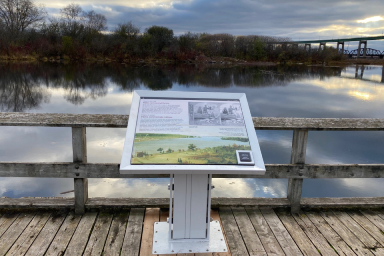
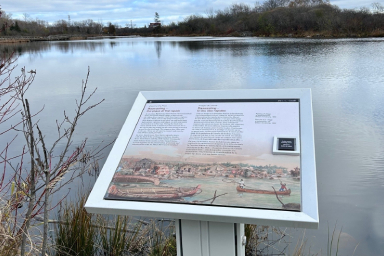
The inclusion of Indigenous perspectives at Sault Ste. Marie Canal National Historic Site adds additional layers to how history is commemorated. The new exhibit and outdoor interpretive panels allow visitors to learn about both the technological achievements of the canal itself, as well as the perspectives of those who have called the region home since long before the canal existed.
- Date modified :
